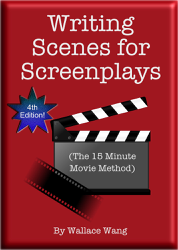Every story is about making the hero change and the best way to make your hero change is through a problem form the past. This haunted past is an event that occurred in the past that we either see in the beginning or gradually learn about over time.
In “Twisters”, the hero is a woman storm chaser who’s smart with a theory on how to stop tornadoes. However, right in the beginning of the movie, she and a bunch of friends are trying to test her theories to stop a tornado but her theory fails and all of the hero’s friends get killed, including the hero’s boyfriend. Now the hero must spend the rest of the story overcoming her guilt in letting her friends die because her theory in stopping a tornado failed.
By the end of “Twisters”, the hero finally overcomes her guilt and charges towards the tornado by herself to save a town, filled with her friends, from getting killed by an oncoming tornado. Notice the simple change in the hero in “Twisters” based on the hero’s haunted past:
- Haunted past – Hero’s theory to stop a tornado fails and as a result, she watches three of her friends die because of her mistake.
- End – Hero uses her knowledge to confront and stop a tornado to save a town and all her friends in the town.
The trauma that creates the hero’s haunted past is also the motivation for the hero to overcome this trauma and succeed in the end. Notice that the haunted past creates a problem (the hero’s friends die after the hero’s theory fails). Then the end resolves this haunted past (the hero uses her theory to stop a tornado and save her friends).
By just defining your hero’s haunted past and the end, you can define your hero’s change, but it all starts with putting your hero in a dead end life from a haunted past. In “Twisters”, we see this haunted past right up front. Then the story jumps five years forward in time. However in many stories, we only learn about the hero’s haunted past gradually.
In “Little Miss Sunshine”, we never see the hero experience a traumatic event in the beginning like we see the hero experience in “Twisters”. Instead, we get gradual clues that the hero’s family has problems. The grandfather was thrown out of a retirement home for snorting cocaine, the hero’s uncle tried to commit suicide and is living with he family to recover. The hero’s brother has taken a vow of silence and hates everyone. The hero’s father thinks everyone is either a winner or a loser, and the hero’s mother is struggling to deal with the family’s poor financial situation and frayed relationships.
So in “Little Miss Sunshine”, we gradually learn that the hero’s haunted past involves her dysfunctional family. Over time, we learn the history of each character and how they wound up the way they are, but as the story develops, each character gradually learns to overcome their problems with the help of the hero bringing everyone together.
- Haunted past – The hero’s family is broken with all family members feeling separated from the others.
- End – The hero performs at the beauty pageant and shocks the organizers. When the organizers insist that the father yanks her off the stage, the father refuses and dances with her instead, inspiring all family members to jump on stage and dance as well, which helps bring the entire family together.
Olive, the little girl who wants to compete in the beauty pageant, is the hero in “Little Miss Sunshine”, so her actions help her bring her entire family together, which makes her life whole by the end. In comparison, her family was falling apart in the beginning of the story.
So when creating your own story, think of your hero’s haunted past. Do we see the haunted past happen like in “Twisters”? Or do we gradually learn about the hero’s haunted past as the story gradually unfolds like in “Little Miss Sunshine”?
Either way is fine just as long as it works for your story.
Sign up to take a FREE course about how to write scenes in a screenplay.

